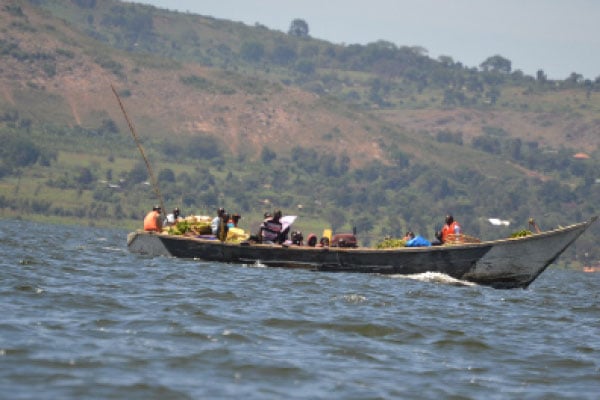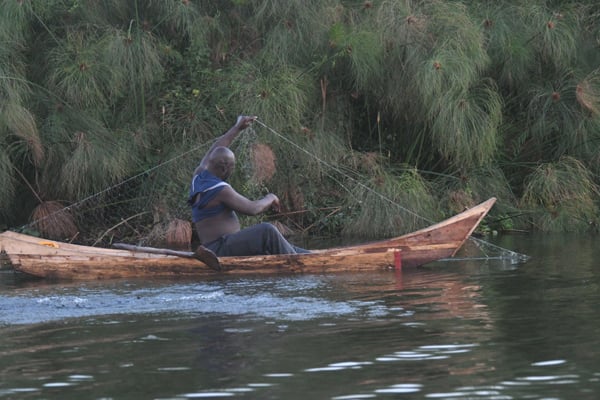Travellers cautioned on strong winds on lakes

What you need to know:
- Leaders emphasise the importance of caution, improved disaster management, and enhanced safety measures to mitigate tragic incidents.
- Mr Photius Ssekabira, a lifesaver trainer in Kalangala, said little has been done to equip fishermen with information about weather patterns.
Weather experts have warned water transport users about the risk of accidents as strong winds hit Lake Victoria.
Navigating the waters from the March to August poses risk due to the prevalence of strong winds and waves. These conditions, often accompanied by heavy storms and lightning, heighten the danger for watercraft.
Kalangala District’s disaster map reveals that regions such as Mazinga, Kyamuswa, Bubeke, and Bufumira, along with parts of Bujumba sub-county and Kalangala Town Council, are susceptible to strong winds.
According to Mr David Omongot, the Kalangala District disaster focal person, lake users need to be cautious, especially at night.
“We request those who travel or fish using wooden boats to utilise hours when the weather is fine,” he said during an interview last Thursday.
The alert comes after heavy winds last week destroyed houses and boats at various landing sites, including Kibanga-Maboga, Bungo, Buziga, Betta in Mugoye Sub-county, Mweena Landing Site in Kalangala Town Council, and Gunga in Mazinga Sub-county.
According to the assessment conducted by the district disaster management committee, more than 374 households were affected.
Mr Omongot urged residents to stay vigilant and promptly report emergencies to local leaders .
“We are now focusing on training sub-county, parish, and village leaders on the management of disasters to be able to have quicker responses,” he said.
Mr Joseph Byaruhanga, the Kalangala District forest officer, attributed the strong winds to extensive deforestation for agricultural activities such as planting oil palm and rice.
“Agricultural activities and human settlement have highly contributed to the decline in forest cover to 22 percent from 54 percent in 1954. The windbreakers are no more and we get hit by these winds badly,” he said.
According to the water quality and quantity synthesis report of 2005, compiled under the Lake Victoria Environment Management Program, the islands of Ssese are part of the convergence zone of winds from the East, South East, and South West .
The report shows that the same convergence creates asymmetrical and unstable waves that result in heavy turbulence of the waters that eventually cause water accidents.
Mr Photius Ssekabira, a lifesaver trainer in Kalangala, said little has been done to equip fishermen with information about weather patterns.
“Fishermen can’t access timely weather updates, which I think the Meteorological Authority needs to work on,” he said.
According to Mr Norman Goweyanga, the marine safety officer under the Ministry of Works and Transport, the government is working closely with all stakeholders to improve marine time rescue systems in case of emergencies.
He, however, called on all boat owners and skippers to always wear life jackets and avoid overloading.
Background
l At least 3,500 Ugandans across 74 districts are reported to have drowned over a two–and–a–half–year period, according to a 2021 report by Makerere University’s School of Public Health. This translates into 1,400 deaths per year.
l Last August, Uganda recorded one of the most fatal water accidents in five years, where 16 passengers perished near Nsazi Island in Mukono District. The wooden vessel, which was travelling from Kalangala to Kasenyi Landing Site, was reportedly overloaded. It was carrying an estimated 25 passengers, but only nine survived.
l On February 16, a boat that was loaded with five people, five cows, and other items capsized on Lake Victoria between the Kirono Landing Site in Buvuma Island and Kiyindi Landing Site in Buikwe, leaving three passengers, a skipper and five cows dead.
l On December 11, three female passengers died when a boat they were traveling in capsized on the same lake between Kirewa and Namiti islands. At least 24 passengers, mostly women, were on board




